As employees of traffic police down under divestment for dirty license plates
In some cases, a dirty room can deprive of the rights.
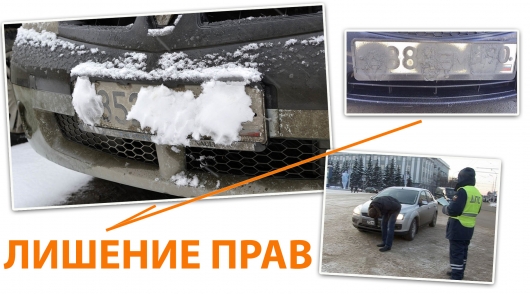
We all know that for unreadable license plates (smeared with mud, in snow, or covered with ice) driver can be brought to administrative responsibility in the form of a fine in the amount of 500 rubles. But unfortunately, as with many things, everything in our country is relatively and theoretically. Including responsibility for illegible number of the car. For example, did you know that in our country there are cases where drivers were deprived of driving license for dirty, unreadable number plates? Surprised? Here are the details.
In 2016, autumn in Moscow employees of traffic police stopped the driver, who was driving with a dirty license plates, which was contaminated with snow, ice and road dirt. And weather conditions this day really explained why the car was not visible license plates. A maximum that threatened the driver for such a violation is a fine of 500 rubles in accordance with part 1 of article 12.2 of the administrative code.
But traffic police officers made the Protocol on an administrative offense under part 2 of article 12.2 of the administrative code, which provides for more stringent liability in the form of a fine in the amount of 5000 rubles or disqualification for a term from 1 to 3 months.
But on what basis, the traffic police caught the driver, unreadable license plates in the second part of the article 12.2 KoAP of the Russian Federation?
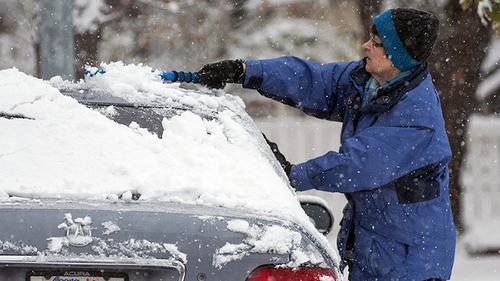
And the thing is that in the Protocol of the traffic police wrote the following: “the vehicle detected license plates that have been treated with materials that promote the accumulation of snow, dirt and ice that may impede the identification of the state registration signs”.
That is, the traffic police were sure the driver is especially something treated with the machine room, impossible to identify. In the end, a seemingly small offense became more serious. As a result, the materials of the case against the driver was sent to the world court.
By the way, for reference. That is under part 2 of article 12.2 of the administrative code, the traffic police are usually attracted to cunning drivers who actually use a variety of tools and materials impeding the identification license plates of the car.
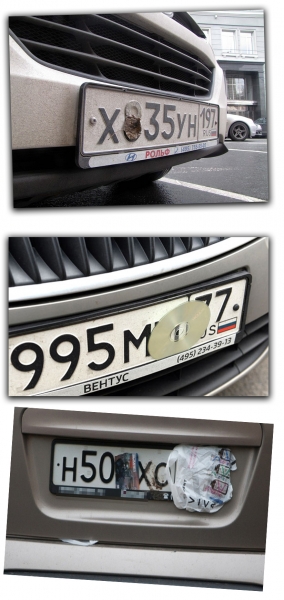
For example, someone buys a dubious film on the numbers, distorting their vision at a certain angle, sellers are claim that camera photo video recording can’t read license plates, someone intentionally hides license plates in Parking lots (glue magnets, stick with the numbers and even tear off the protective film rooms along with the paint letters or numbers) to go from fixing the car parkon controlling the Parking rules by using photos and videopokerhome equipment.
But why the driver, who was driving with dirty numbers attracted to such a harsh article? After all, to attract the driver under part 2 of article 12.2 of the administrative code, the traffic police had to establish the intent of the driver on the deliberate withholding of license plates?
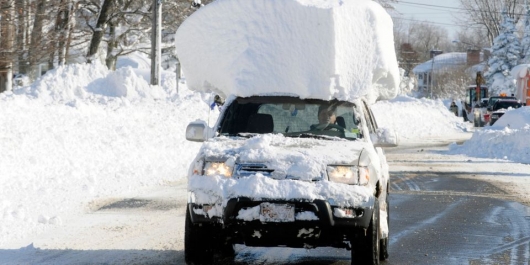
How can you prove in dirty weather conditions, in autumn / winter that the driver is specially contaminated plates? Indeed, in this period, many cars drive with unreadable number plates. Even a crews of traffic police and police cars are often found with dirty snow rooms.
Despite the absurdity of the Protocol of the traffic police, in relation to the driver of our example, several courts handed down a disappointing verdict. So, the world court, district court and the Moscow city court decided that the snow and ice on the license plate of the motorist resulted from his intentional actions.
That is, ice, snow and mud steel equipment or material may impede the identification of number plates. In the end, the driver was brought to administrative responsibility as regards 2 articles 12.2 of the administrative code. Agree, sounds much.
The driver decided to defend their rights until the end of challenging the decision of the cassation court, asking for truth in the Supreme court, which eventually sided with the driver.
First, the Supreme court in the proceedings against the driver recalled the Decision of the Plenum of the Supreme court of the Russian Federation of 24.10.2006 of the year, where at paragraph 5.1 is explained in which cases the driver can be held by part 2 of article 12.2 of the administrative code.
For reference here is an excerpt from paragraph 5.1 of the Resolution of Plenum of the Supreme court of the Russian Federation of 24.10.2006 year:
5.1. If you are qualifying under part 1 of article 12.2 KoAP of the Russian Federation of actions of the person should be guided by the note to article 12.2 of the administrative code, according to which the state registration sign admits non-standard if it does not meet the requirements established by the legislation on technical regulation, and unreadable, when from a distance of twenty meters is not provided the reading in the dark at least one of the letters or numbers back state registration sign, and in the daytime at least one of the letters or numbers front or back state registration sign.
Under this provision are subject to the qualification actions resulting in control of the vehicle on which the state registration signs are established with infringement of requirements of state standard. Types, basic dimensions and technical requirements for state registration signs and their installation are determined by GOST R 50577-93.
When qualifying the actions of the person under part 2 of article 12.2 KoAP the Russian Federation it is necessary to consider that the objective side of an administrative offense, in the particular form of the actions of the person in control of the vehicle:
- without state registration plates (including one of them);
- in the presence of the state registration signs established in violation of requirements of state standard on other than the designated locations (including just one of them);
- with the state registration signs equipped with application of materials, interfering or complicating the identification of these characters (including only one of them).
(paragraph 5.1 was introduced by the Resolution of Plenum of the Supreme Court of the Russian Federation of 09.02.2012 N 2)
But why, then, the court of cassation came to the driver’s side, relying on the interpretation in the Resolution of Plenum of the Supreme court?
And the thing is that the judge of the court of cassation considered that the driver used a material or a dedicated tool for intentional contamination and holding on the license plates of snow and ice.

However, in the case there are no data on the evidence that the driver actually deliberately used any means to hide the license plate of his car.
By the way, the Supreme court was unable to reclassify the case on part 1 of article 12.2 of the administrative code (unreadable dirty rooms), because in the case file there was no information about whether read the rear license plate, when the traffic police stopped the driver in Moscow.
In the end, the Supreme court just overturned all the rulings previously handed down by various courts of Moscow.
As you can see the driver defended their legitimate rights. But it took him a lot of time.
The worst thing that this driver may be any driver who does not have time to clean a dirty license plate. Because in fact, as any driver suspected of intentional pollution of the room for obstacles identification.
That is, the traffic police in this situation – the king and God on the road. Only for him to decide, you deliberately contaminate the rooms of his car from snow, ice or mud, or the room was really dirty due to weather conditions. Agree that that gap in the law is clearly not conducive to reducing corruption in the traffic police authorities.
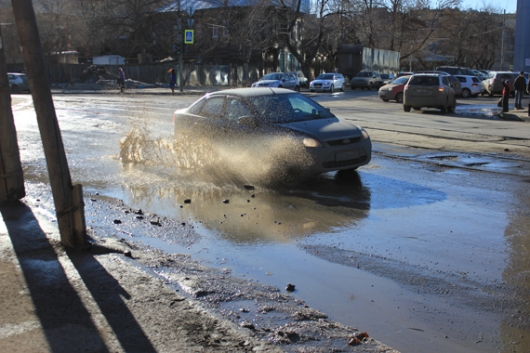
For example, you to your communication with the authorities did not like the traffic police or traffic police officer was not in the mood (had a fight with his wife, not enough sleep, not eating, etc.) and a simple stroke of the pen in the Protocol your ride with dirty rooms easily and quickly, as the service in Mak-Avto, turns in part 2 of article 12.2 of the administrative code.
It is of course sad, because this way the traffic police plan to rivet for this type of violation (the existence of which the leadership of the traffic police denies – but all drivers and lawyers know that it is).
But what they do not send drivers to court? Well, atricauda the driver in court, so what? The Protocol went into statistics of the traffic police. It’s job done. Why be afraid of responsibility for illegal involvement on the wrong part of the administrative articles? In the law no.
Maybe it’s time for our government to consider the possibility to introduce the responsibility of the traffic police, who have charged the driver of a wrong administrative responsibility? Why drivers should be responsible for their illegal actions, and the traffic police there? So we are legal, the state won’t be built.
Expert opinion:
- Akums Constantine, a lawyer in civil cases:
The dirty license plates of drivers to stop all year round. But usually in spring and autumn conducted preventive raids traffic police, which identifies the vehicles with unreadable registration number plates.
Traditionally, these raids are conducted not only to massively identify drivers operating vehicles with dirty license plates, but in order to identify drivers using fake number plates, modified operating cars without number plates, as well as for the detection of drivers using a variety of materials and tools for obstacles identification numbers of the car.
Unfortunately, in my practice quite often there are cases when drivers illegally brought to administrative responsibility under part 2 of article 12. Of the administrative code.
In most cases, they were able to defend their rights in the courts. Unfortunately, most often in the court of cassation.
Alas, the magistrates ‘ courts as a rule do not go into the details of the case, stamping the decisions of the courts rewriting the conclusion of the traffic police.
- Elizabeth Smirnova, the society for the support of the drivers:
Unfortunately, in our country, the traffic police have too many powers and very few specific instructions. In many situations, the traffic police can make a conclusion about the guilt or innocence of the driver of a misdemeanor. Often this decision is based on the usual inner conviction. This, of course, need something to do.
Also on the legislative level is not resolved, the responsibility of the DPS, in case it was wrong to classify the driver violation of traffic regulations, and was attracted not for the article of the administrative code. Very often it is not just errors traffic police officers in the interpretation of the administrative code, and quite intentionally on causes which we can only guess.
